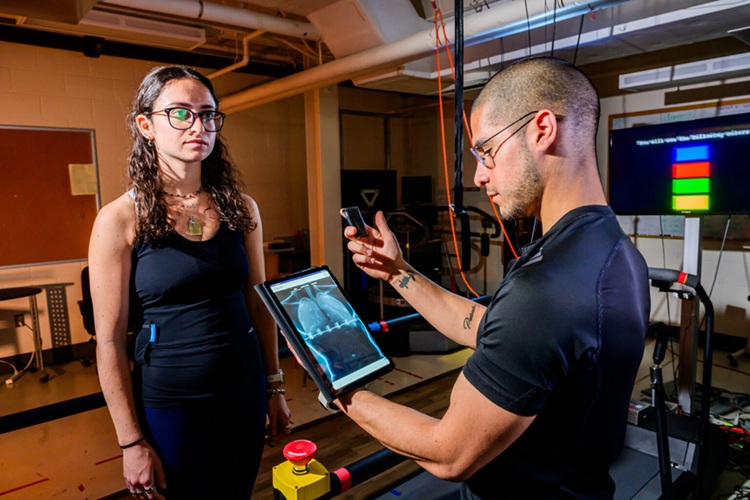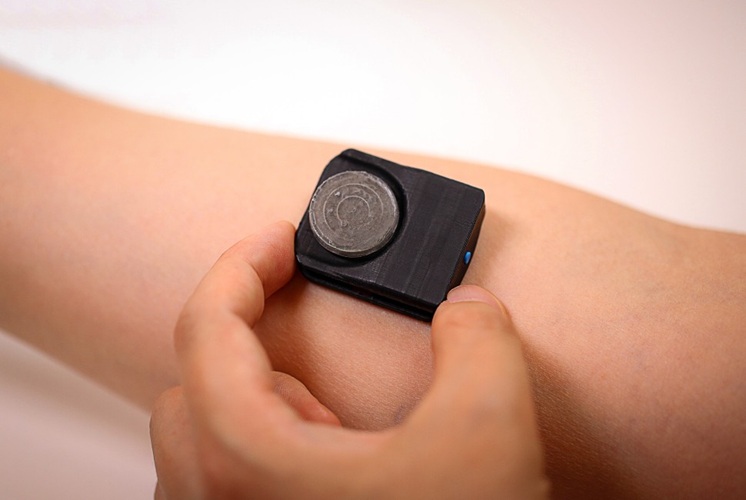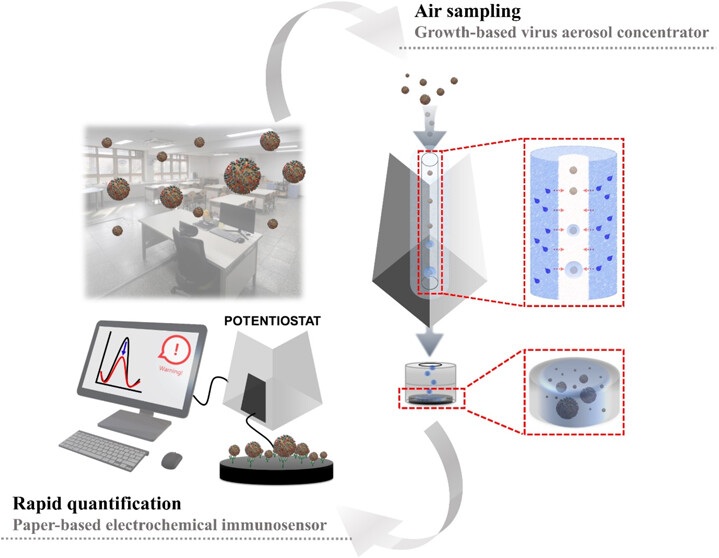New Way to Determine Need for Aneurysm Surgery
|
By HospiMedica staff writers Posted on 24 Apr 2003 |
A new noninvasive method for predicting abdominal aortic aneurysm (AAA) rupture risk and the need for surgery has been shown to be better than measuring the aneurysm's diameter, used in the past for this purpose. The method was described in the April 2003 issue of the Journal of Vascular Surgery.
More than 100 patients who had computed tomography (CT) scans during the course of routine care had AAA wall-stress analysis. The CT scan is processed through a series of computer programs, including an engineering process called finite element analysis. This breaks the structure into thousands of tiny elements so a computer can calculate the wall stress using the 3-D shape of the AAA from the CT scan, the patient's blood pressure, and the tissue properties of typical AAAs. The result is a computer-generated "stress map” that displays the aneurysm wall stress, the force trying to pull the aneurysm apart and cause rupture.
The patients in the study were generally under observation for their aneurysm because it was too small to repair, or because the risks of repair were felt to be too high compared to the risk of rupture, or because the patient decided not to have the repair. The outcomes of observation were then compared, based on the standard method of determining rupture risk (maximum AAA diameter) versus the maximum stress within the aneurysm wall. The results showed that the new technique predicted the risk of rupture better than maximum AAA diameter, with a 25-fold increase in rupture risk for patients with high AAA wall stress, and only a nine-fold higher increase in risk for patients with a large diameter (over 5.5 cm) aneurysm. Some patients with small aneurysms had high wall stress, while some patients with large aneurysms had low wall stress.
”Another impact of this study may be that blood pressure control in aneurysm patients will be examined with more scrutiny, since blood pressure plays a key role in AAA wall stress. AAA wall stress analysis may be able to prevent rupture in some patients and prevent unnecessary surgery in others,” said Dr. Mark Fillinger, who conducted the study along with colleagues at the Dartmouth-Hitchcock Medical Center (Lebanon, NH, USA).
Related Links:
Dartmouth-Hitchcock
More than 100 patients who had computed tomography (CT) scans during the course of routine care had AAA wall-stress analysis. The CT scan is processed through a series of computer programs, including an engineering process called finite element analysis. This breaks the structure into thousands of tiny elements so a computer can calculate the wall stress using the 3-D shape of the AAA from the CT scan, the patient's blood pressure, and the tissue properties of typical AAAs. The result is a computer-generated "stress map” that displays the aneurysm wall stress, the force trying to pull the aneurysm apart and cause rupture.
The patients in the study were generally under observation for their aneurysm because it was too small to repair, or because the risks of repair were felt to be too high compared to the risk of rupture, or because the patient decided not to have the repair. The outcomes of observation were then compared, based on the standard method of determining rupture risk (maximum AAA diameter) versus the maximum stress within the aneurysm wall. The results showed that the new technique predicted the risk of rupture better than maximum AAA diameter, with a 25-fold increase in rupture risk for patients with high AAA wall stress, and only a nine-fold higher increase in risk for patients with a large diameter (over 5.5 cm) aneurysm. Some patients with small aneurysms had high wall stress, while some patients with large aneurysms had low wall stress.
”Another impact of this study may be that blood pressure control in aneurysm patients will be examined with more scrutiny, since blood pressure plays a key role in AAA wall stress. AAA wall stress analysis may be able to prevent rupture in some patients and prevent unnecessary surgery in others,” said Dr. Mark Fillinger, who conducted the study along with colleagues at the Dartmouth-Hitchcock Medical Center (Lebanon, NH, USA).
Related Links:
Dartmouth-Hitchcock
Latest Patient Care News
- Portable Biosensor Platform to Reduce Hospital-Acquired Infections
- First-Of-Its-Kind Portable Germicidal Light Technology Disinfects High-Touch Clinical Surfaces in Seconds
- Surgical Capacity Optimization Solution Helps Hospitals Boost OR Utilization

- Game-Changing Innovation in Surgical Instrument Sterilization Significantly Improves OR Throughput
- Next Gen ICU Bed to Help Address Complex Critical Care Needs
- Groundbreaking AI-Powered UV-C Disinfection Technology Redefines Infection Control Landscape
- Clean Hospitals Can Reduce Antibiotic Resistance, Save Lives
- Smart Hospital Beds Improve Accuracy of Medical Diagnosis
- New Fast Endoscope Drying System Improves Productivity and Traceability
- World’s First Automated Endoscope Cleaner Fights Antimicrobial Resistance
- Portable High-Capacity Digital Stretcher Scales Provide Precision Weighing for Patients in ER
- Portable Clinical Scale with Remote Indicator Allows for Flexible Patient Weighing Use
- Innovative and Highly Customizable Medical Carts Offer Unlimited Configuration Possibilities
- Biomolecular Wound Healing Film Adheres to Sensitive Tissue and Releases Active Ingredients
- Wearable Health Tech Could Measure Gases Released From Skin to Monitor Metabolic Diseases
- Wearable Cardioverter Defibrillator System Protects Patients at Risk of Sudden Cardiac Arrest
Channels
Critical Care
view channel
Generative AI Technology Detects Heart Disease Earlier Than Conventional Methods
Detecting heart dysfunction early using cost-effective and widely accessible tools like electrocardiograms (ECGs) and efficiently directing the right patients for more expensive imaging tests remains a... Read more
Wearable Technology Predicts Cardiovascular Risk by Continuously Monitoring Heart Rate Recovery
The heart's response to physical activity is a vital early indicator of changes in health, particularly in cardiovascular function and mortality. Extensive research has demonstrated a connection between... Read more
Wearable Health Monitoring Device Measures Gases Emitted from and Absorbed by Skin
The skin plays a vital role in protecting our body from external elements. A key component of this protective function is the skin barrier, which consists of tightly woven proteins and fats that help retain... Read morePatient Care
view channel
Portable Biosensor Platform to Reduce Hospital-Acquired Infections
Approximately 4 million patients in the European Union acquire healthcare-associated infections (HAIs) or nosocomial infections each year, with around 37,000 deaths directly resulting from these infections,... Read moreFirst-Of-Its-Kind Portable Germicidal Light Technology Disinfects High-Touch Clinical Surfaces in Seconds
Reducing healthcare-acquired infections (HAIs) remains a pressing issue within global healthcare systems. In the United States alone, 1.7 million patients contract HAIs annually, leading to approximately... Read more
Surgical Capacity Optimization Solution Helps Hospitals Boost OR Utilization
An innovative solution has the capability to transform surgical capacity utilization by targeting the root cause of surgical block time inefficiencies. Fujitsu Limited’s (Tokyo, Japan) Surgical Capacity... Read more
Game-Changing Innovation in Surgical Instrument Sterilization Significantly Improves OR Throughput
A groundbreaking innovation enables hospitals to significantly improve instrument processing time and throughput in operating rooms (ORs) and sterile processing departments. Turbett Surgical, Inc.... Read moreHealth IT
view channel
Printable Molecule-Selective Nanoparticles Enable Mass Production of Wearable Biosensors
The future of medicine is likely to focus on the personalization of healthcare—understanding exactly what an individual requires and delivering the appropriate combination of nutrients, metabolites, and... Read more
Smartwatches Could Detect Congestive Heart Failure
Diagnosing congestive heart failure (CHF) typically requires expensive and time-consuming imaging techniques like echocardiography, also known as cardiac ultrasound. Previously, detecting CHF by analyzing... Read moreBusiness
view channel
Expanded Collaboration to Transform OR Technology Through AI and Automation
The expansion of an existing collaboration between three leading companies aims to develop artificial intelligence (AI)-driven solutions for smart operating rooms with sophisticated monitoring and automation.... Read more
















